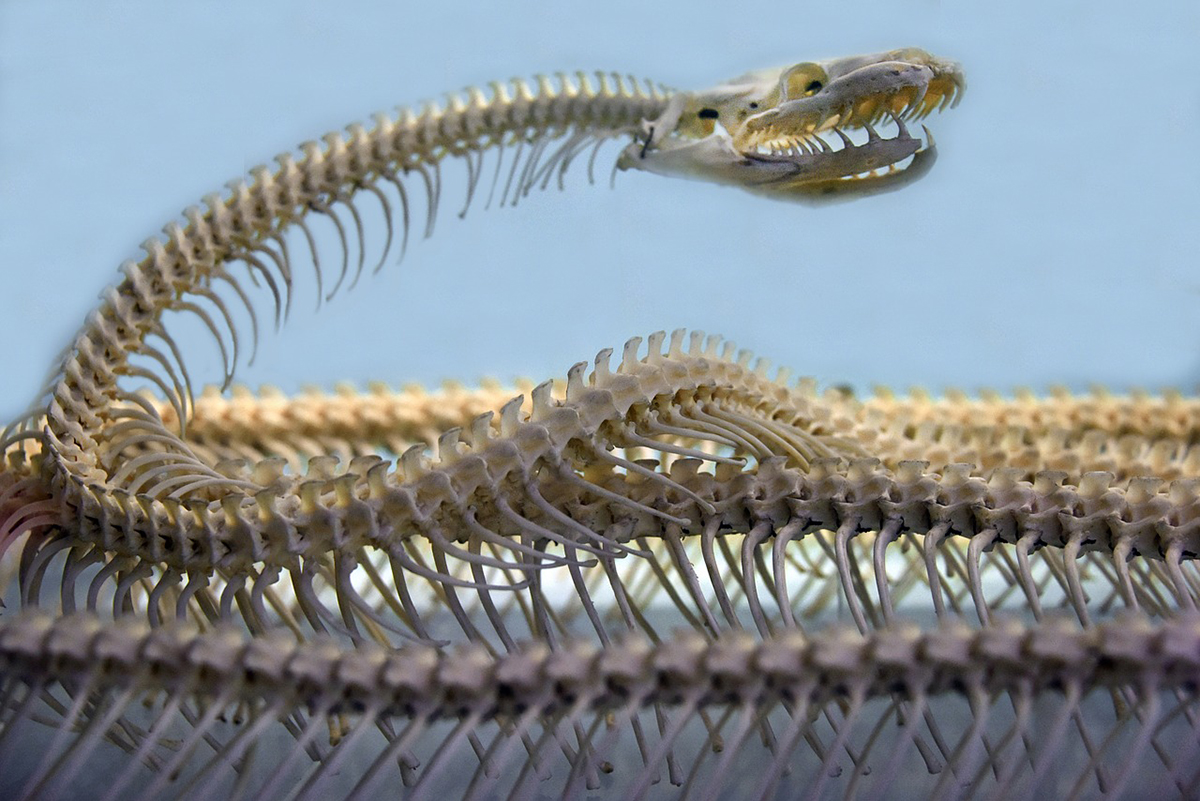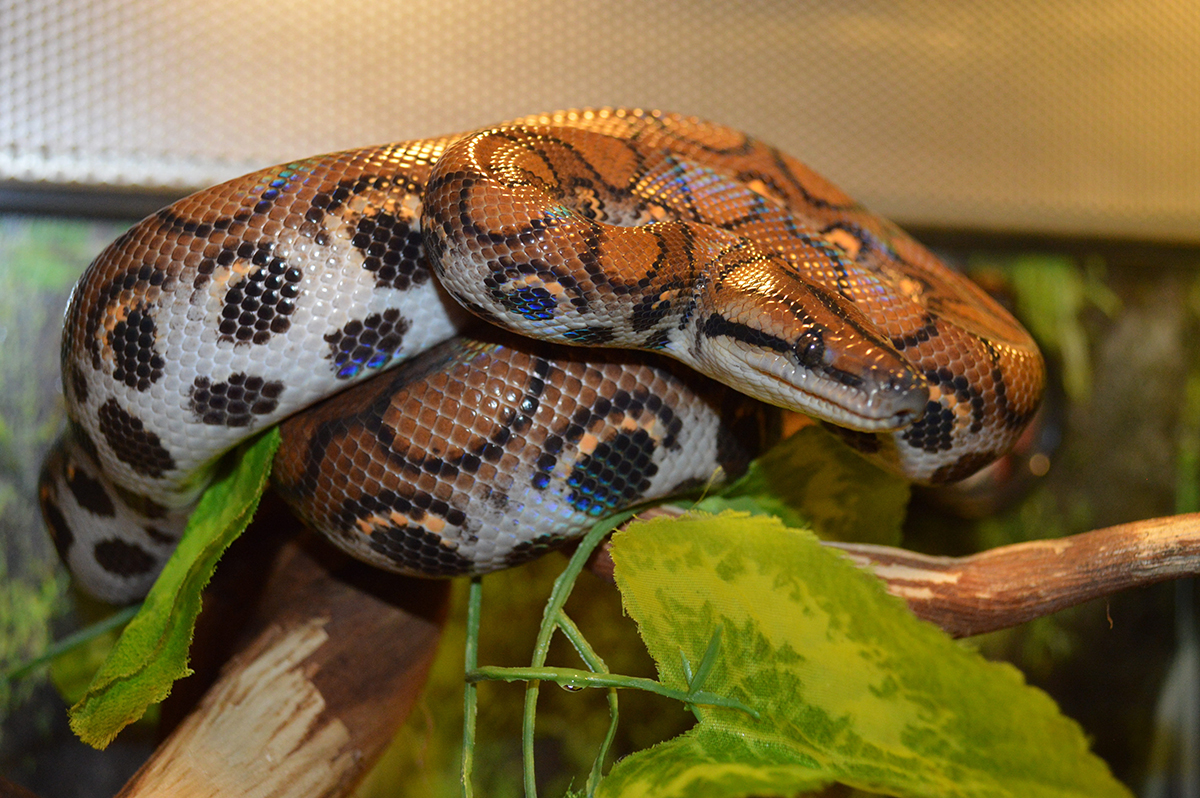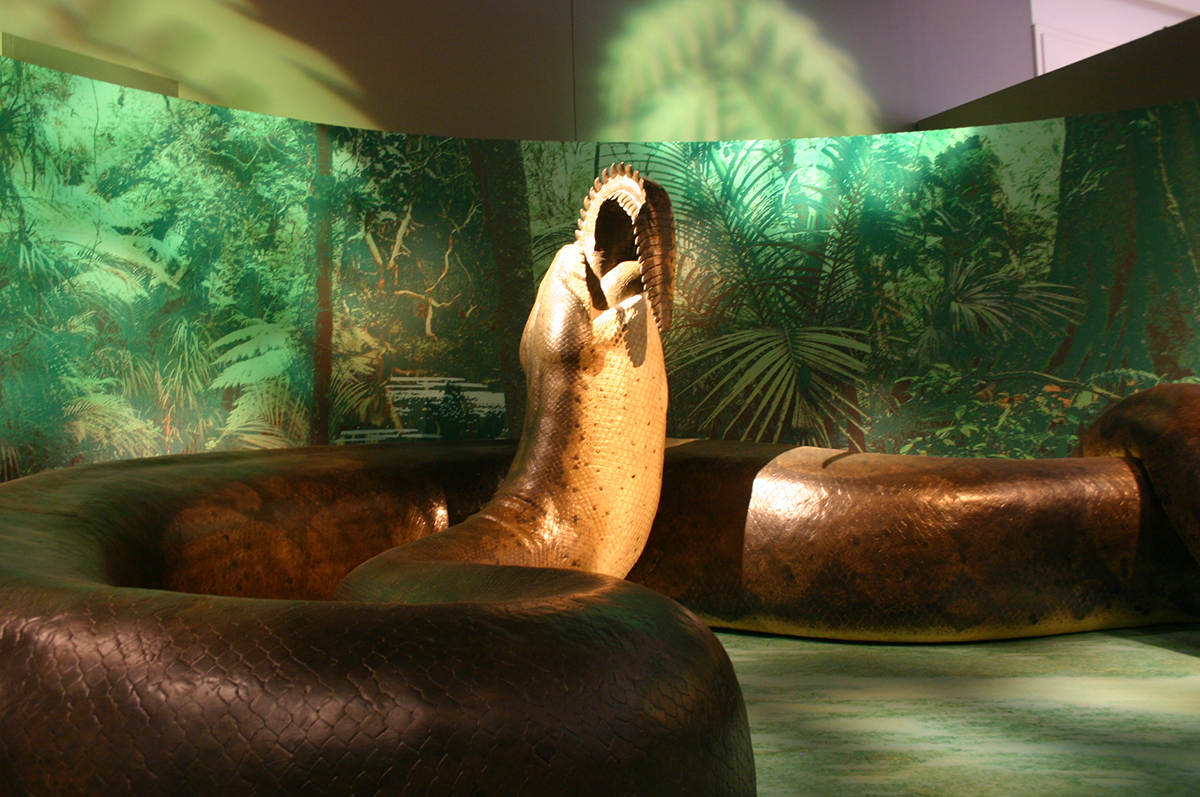
The titanoboa, also known as Titanoboa cerrejonensis, is an extinct snake belonging to the boid family. This reptile inhabited areas of South America 60 to 58 million years ago, during the Paleocene. At the moment, It is the largest known snake that has come to exist on the face of the earth.
The name is due to its size and the place of its discovery. Remains of this animal were found for the first time in 2009, in the Cerrejón coal mine, in Colombia. It is one of the largest open mines in the world.
Description of the Titanoboa

Through investigations carried out on the vertebrae of this snake, it was possible to conclude that the animal could weigh up to 1135 kilos, a weight similar to that of an off-road car. Furthermore, it is speculated that the length of an adult titanoboa ranged from 13 to 14,3 meters, which is triple that of a current crocodile.
Along with the fossils of this gigantic reptile, remains of enormous turtles and XNUMX-meter crocodiles were also found, which were its co-inhabitants in the lakes. Some scientists think that the titanoboa could have fed on them, since today there are large snakes capable of eating a crocodile. However, there is evidence that this animal probably also fed on fish. This characteristic would make the titanoboa unique within the boid family.
The Titanoboa was a constrictor snake, physically very similar to the current boa, regardless of size. This implies that he choked his victims with great force, so he didn't need to produce poison. He could exert a force of 50 kilos per square centimeter. Experts consider that the titanoboa it was at the top of the food chain, and if it had coincided with the human being, it would have fed on it too.
This gigantic snake became extinct about 58-55 million years ago, when temperatures reached their maximum in the Paleocene period, due to changes caused by the increase in temperature.
Anatomy
Initially it was thought that the vertebrae found in the mines belonged to a crocodile. Some time later, scientists realized that it was really a snake and that is when they began to make theories about this reptile and its environment.
After finding a skull and jaw, it was concluded that it was capable of opening its mouth wide enough, separating the lower jaw, to swallow a whole crocodile. This is not surprising, since modern snakes can do the same in order to gobble up larger animals.
Climate

The discovery of Titanoboa cerrejonensis It was quite a discovery with respect to the studies referring to the climate of the Paleocene. With the appearance of this reptile, different hypotheses began to be made about the degrees that could have existed at that time.
Given the fact that snakes are cold-blooded animals, their size varies depending on the temperature of their habitat. It has been calculated that the titanoboa, being so gigantic, it needed an average temperature of 30 to 34 degrees to survive. Thanks to these data, the initial theory that tropical vegetation cannot survive warmer temperatures and that, as a consequence, there is less diversity of species in warmer areas, can be debated.
However, some scientists disagree with this idea. In 2009, a study was published that contradicted the previous theory. According to this study, the lizards that inhabit tropical areas today should reach up to ten meters in length, but this is not the case.
The biomechanics specialist, Mark Denny, was of the opinion that the snake, being so large, would also produce a lot of metabolic heat, so the environmental temperature must have been between four and six degrees below the first estimate that was made, to avoid the reptile overheating.
Curiosities about the titanoboa
[related url=»https://infoanimales.net/dinosaurs/microraptor/»]
Given the high temperatures, the humidity and the existing jungle density in the equatorial zone of South America, such ancient vertebrate fossils had never been found before. Thanks to this discovery, scientists have been able to better understand the evolutionary history of snakes. They have also been able to deduce the climate of the American tropics in an important period at an evolutionary level, since new species were appearing at that time.
In 2011 an electromechanical replica of a Titanoboa was created. With twenty aluminum links and forty hydraulic cylinders, it reached a length of ten meters. There are plans to extend this robot to reach 15 meters in length.
A year later, in 2012, a life-size reconstruction of the titanoboa was exhibited at Grand Central Station in New York. This sculpture was 14 meters long and weighed 90 kilos. It was created to promote the documentary "Titanoboa: Monster Snake".